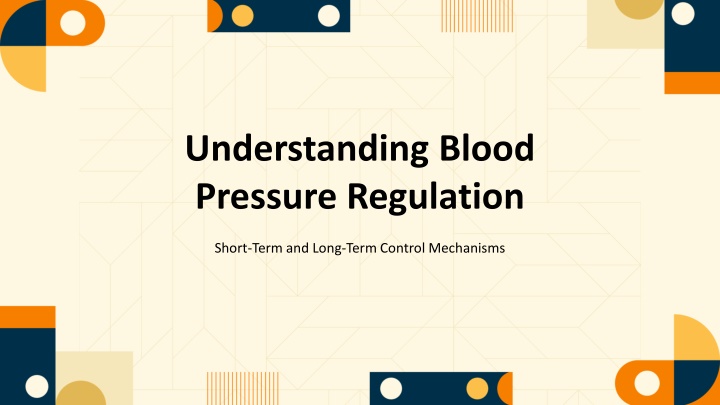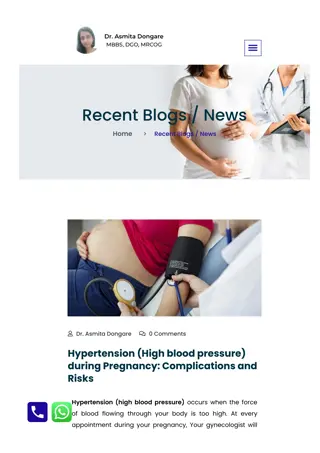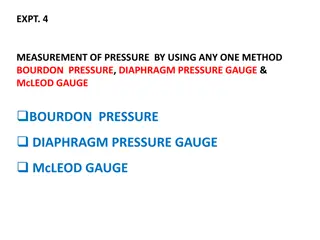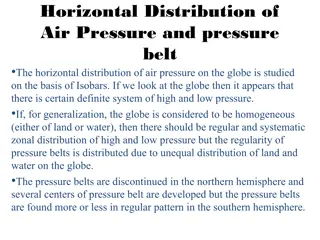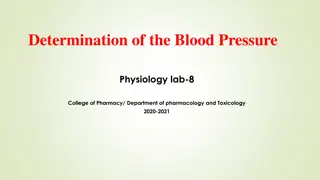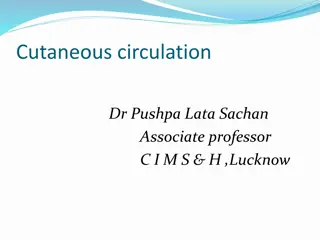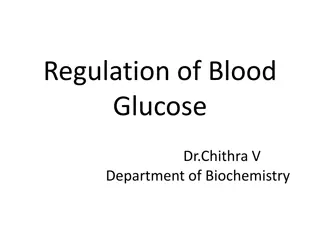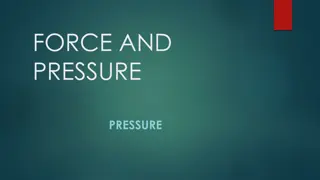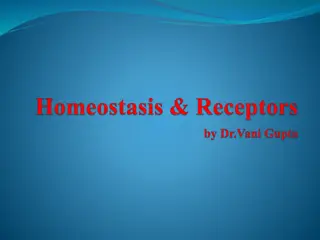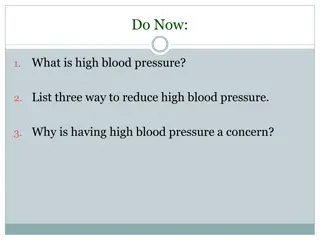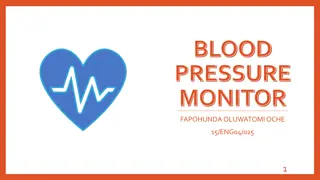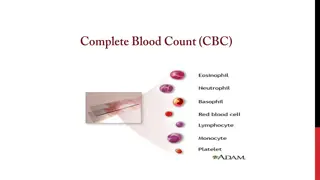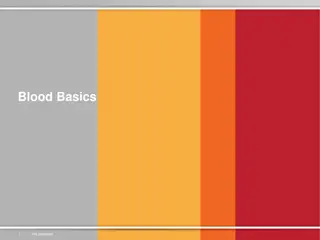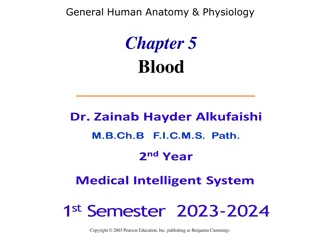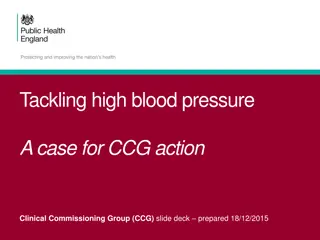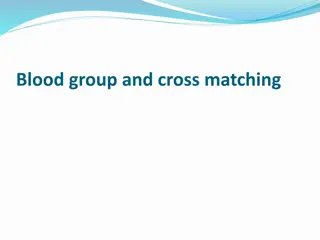Blood Pressure Regulation Mechanisms Overview
This content explores short-term and long-term control mechanisms of blood pressure regulation, focusing on the baroreceptor reflex, cardiovascular control center, and adjustments involved. It delves into the role of baroreceptors, key receptors, reflex components, and effects of autonomic changes in maintaining blood pressure balance. Understanding these mechanisms is crucial for comprehending blood pressure regulation and the impact on overall health.
Download Presentation

Please find below an Image/Link to download the presentation.
The content on the website is provided AS IS for your information and personal use only. It may not be sold, licensed, or shared on other websites without obtaining consent from the author.If you encounter any issues during the download, it is possible that the publisher has removed the file from their server.
You are allowed to download the files provided on this website for personal or commercial use, subject to the condition that they are used lawfully. All files are the property of their respective owners.
The content on the website is provided AS IS for your information and personal use only. It may not be sold, licensed, or shared on other websites without obtaining consent from the author.
E N D
Presentation Transcript
Understanding Blood Pressure Regulation Short-Term and Long-Term Control Mechanisms
Table of Contents The Baroreceptor Reflex Introduction to Blood Pressure Regulation The Cardiovascular Control Control Center 01 02 03 Response to Elevated Blood Pressure Response to Low Blood Pressure Other Influencing Factors 05 06 04 Exercise and Blood Pressure Understanding Hypertension Complications of Hypertension 07 08 09
Table of Contents Baroreceptor Adaptation Conclusion 10 11
Introduction to Blood Pressure Regulation 01. What is MAP? 02. Role of Baroreceptors Mean arterial pressure is a critical measure of blood pressure that is constantly monitored by baroreceptors in the circulatory system. Baroreceptors act as pressure sensors, detecting detecting deviations from normal MAP and initiating initiating reflex responses to restore balance. 03. Short-Term Adjustments 04. Long-Term Adjustments Short-term control measures involve changes in in cardiac output (CO) and total peripheral resistance resistance (TPR) mediated by the autonomic nervous nervous system. Long-term control involves regulating total blood blood volume through mechanisms that balance salt balance salt and water, affecting urine output and and thirst.
The Baroreceptor Reflex 01. How the Reflex Works 02. Components of the Reflex The baroreceptor reflex is triggered by changes in changes in MAP, influencing heart and blood vessels to vessels to adjust CO and TPR. The reflex includes a receptor, afferent pathway, pathway, integrating center, efferent pathway, and and effector organs. 03. Key Receptors 04. Continuous Monitoring Carotid sinus and aortic arch baroreceptors are crucial crucial for moment-to-moment regulation of blood blood pressure. Baroreceptors generate action potentials in response response to ongoing arterial pressure, adjusting firing adjusting firing rates based on MAP changes.
The Cardiovascular Control Center 01. Location of Control Center 02. Efferent Pathway The cardiovascular control center is located in the the medulla of the brain stem, receiving afferent afferent impulses about MAP. The autonomic nervous system serves as the efferent efferent pathway, altering sympathetic and parasympathetic activity. 03. Effects of Autonomic Changes 04. Summary of Effects Changes in autonomic activity can significantly alter alter arterial blood pressure through effects on the the heart and blood vessels. Understanding the effects of sympathetic and parasympathetic stimulation is crucial for grasping grasping blood pressure regulation.
Response to Elevated Blood Pressure 01. Triggering the Reflex 02. Decreasing Blood Pressure When MAP rises, baroreceptors increase firing rates, rates, signaling the cardiovascular control center. center. The control center responds by decreasing sympathetic activity and increasing parasympathetic parasympathetic activity. 03. Physiological Changes 04. Importance of Feedback These changes lead to decreased heart rate, stroke stroke volume, and vasodilation, lowering blood blood pressure. This feedback mechanism is essential for maintaining maintaining blood pressure within normal ranges. ranges.
Response to Low Blood Pressure 01. Baroreceptor Activity Decrease 02. Increasing Sympathetic Activity When blood pressure falls, baroreceptor activity activity decreases, prompting a response from the the cardiovascular center. The center increases sympathetic activity while decreasing parasympathetic output to raise blood blood pressure. 03. Physiological Adjustments 04. Critical Role of Reflexes This results in increased heart rate, stroke volume, and volume, and vasoconstriction, raising blood pressure pressure back to normal. These reflexes are vital for quick adjustments to maintain blood pressure during sudden changes. changes.
Other Influencing Factors 01. Volume Receptors 02. Chemoreceptors Left atrial volume receptors and hypothalamic osmoreceptors play a role in long-term blood pressure pressure regulation. Chemoreceptors in carotid and aortic arteries respond respond to low O2 or high acid levels, influencing influencing blood pressure. 03. Behavioral Responses 04. Temperature Regulation Certain behaviors and emotions can trigger cardiovascular responses mediated by the cerebral cerebral cortex. Hypothalamic control over skin arterioles can affect affect blood pressure during temperature regulation. regulation.
Exercise and Blood Pressure 01. Cardiovascular Changes During Exercise Exercise leads to significant cardiovascular changes, changes, including increased cardiac output. 02. Redistribution of Blood Flow During exercise, blood flow is redistributed, with with skeletal muscles receiving a larger share. 04. Importance of Exercise Physiology Physiology Understanding these changes is crucial for grasping grasping the relationship between exercise and cardiovascular health. 03. Magnitude of Change In moderate exercise, cardiac output can more than than double, increasing significantly during heavy heavy exercise.
Understanding Hypertension 01. Definition of Hypertension 02. Causes of Hypertension Hypertension is defined as blood pressure above above 140/90 mm Hg and is a significant public health public health problem. The causes of hypertension are largely unknown, with unknown, with only 10% of cases having a definite definite cause. 03. Types of Hypertension 04. Self-Perpetuating Nature Hypertension can be classified as secondary or primary, depending on the underlying cause. Once initiated, hypertension can become self- perpetuating, leading to further health complications. complications.
Complications of Hypertension 01. Increased Workload on the Heart 02. Risk of Strokes Hypertension increases the heart's workload, leading leading to potential heart failure over time. High blood pressure can cause strokes due to the the rupture of brain vessels. 03. Heart Attacks 04. Kidney Failure Risks Hypertension is a significant risk factor for heart heart attacks, especially in individuals with atherosclerosis. Progressive impairment of blood flow can lead to to kidney failure in hypertensive patients.
Baroreceptor Adaptation 01. Adaptation Mechanism 02. Regulation at Higher MAP Baroreceptors adapt to operate at a higher level level during chronic hypertension. Even with elevated blood pressure, baroreceptors baroreceptors continue to regulate but at a higher higher mean pressure. 03. Impact on Blood Pressure Control Control This adaptation can complicate the body's ability to ability to respond to further changes in blood pressure. 04. Understanding Adaptation Recognizing this adaptation is crucial for understanding hypertension management.
Conclusion 01. Routine Monitoring 02. Magnitude of the Problem Hypertension often goes undetected without routine routine blood pressure measurements. With one-third of adults in America estimated to have to have chronic elevated blood pressure, awareness is awareness is critical. 03. Preventive Measures 04. Call to Action Understanding blood pressure regulation can help in help in preventing hypertension and its complications. complications. Stay informed and proactive about blood pressure pressure health for a better quality of life.
